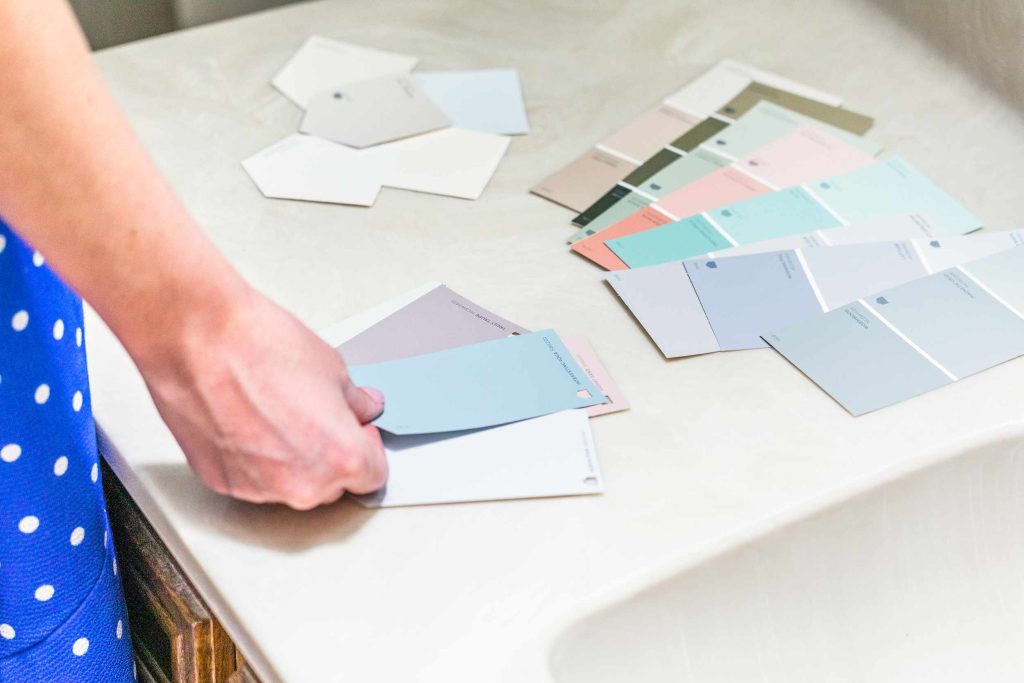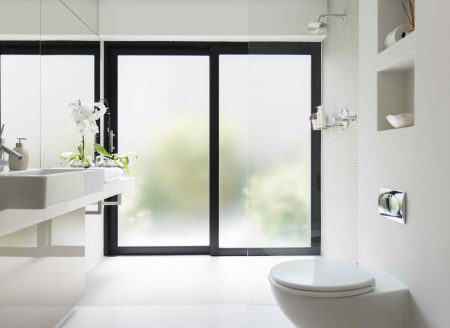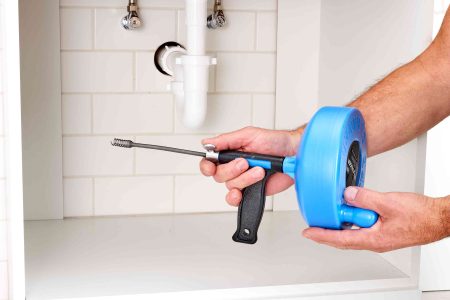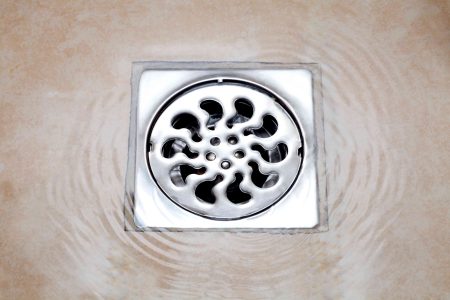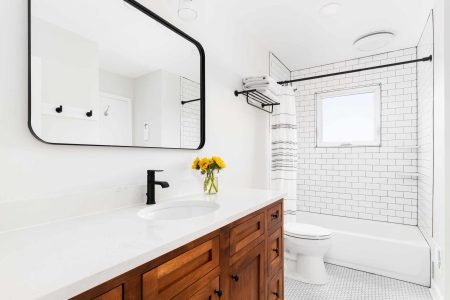If you’ve been thinking about painting your bathroom, you may have heard references to a special type of paint called bathroom paint. You might think that this is different from ordinary interior house paint; that is, paint designed for bathrooms only.
In reality, there really is no such thing as bathroom paint, but there are paints formulated for better performance in the moist environment of bathrooms. You don’t necessarily need to buy so-called bathroom paint to get this performance, but there’s one good reason why you might want to: more options for paint finishes.
Good Paints for Bathrooms
Paints that perform well in bathrooms have a few key characteristics:
- Mildew-inhibiting properties: Bathroom paint has anti-microbial additives that help resist (but not completely prevent) mildew, or mold.
- Washable finish: Since bathroom walls need an occasional wipe-down or even scrubbing, good bathroom paint is slightly tougher and more resilient than other interior paints.
- Tight structure: Some paints have a tighter structure, which can make lower-gloss sheens perform as well as higher-gloss paints in high-moisture environments.
Why Bathrooms Are Hard On Paint
Bathrooms are wet. As a result, moisture should be your first concern when laying down a fresh coat of paint on your walls. Moisture affects your bathroom walls in two ways. Damp air from steamy baths and showers collects on the walls. Then, there’s water directly from the shower, bath, or sink that gets splashed onto the walls.
Moisture can damage paint when it penetrates the paint layer and contacts the drywall or plaster surface underneath. This can lead to peeling paint and mold growth. The less permeable the paint coating, the less moisture gets through.
How Paints Resist Moisture
Long before mildew-resistant properties were added to paint, using high-gloss paints was the most effective way of dealing with bathroom moisture. The higher the gloss, the better the paint finish performs in bathrooms. In older bathrooms, you will often find high-gloss finishes on all surfaces. High-gloss paints do not prevent mildew, but they make easy work when wiping down those drippy, brown stains characteristic of bathrooms.
High-gloss is only one of several sheens of paint. Starting with the flattest (lowest sheen) finish and working upward:
- Flat: Nice matte coating, but best in low-traffic areas where it is never or rarely touched; absorbs moisture, so it is bad for bathrooms; great for halls and dining rooms
- Eggshell: Slightly “sheeny” and more washable and scrub-able than flat; best for places without a lot of moisture
- Satin: Has a bit of a gloss, somewhat more than eggshell, and can be used in low-moisture bathrooms
- Semi-gloss: Excellent finish for any kind of bathroom; repels moisture well and is not ultra-shiny like high-gloss
- High-gloss: Toughest option for bathroom walls but looks awful over large surfaces such as walls; best for smaller surfaces like trim and cabinets
Products You Can Call Bathroom Paints
Many interior house products are even shifting away from the bathroom paint name. Steve Revnew, VP of Product Innovation at Sherwin-Williams, explains that his company emphasizes premium paints that tackle moisture and provide durability in any part of the home, in favor of their original Bath Paint.
For instance, Sherwin-Williams’ line of Emerald Interior Acrylic Latex Paint contains anti-microbial properties on par with Bath Paint and is an ideal paint choice for trim, walls, or ceilings. One problem with flat finishes in moist environments, says Revnew, is that they are porous and have a tendency to trap moisture. Glossy finishes, by contrast, practically “bead water.”
The best thing about paint formulated for bathrooms is that they give you the option of more paint sheens. While standard paints must be satin, semi-gloss, or high-gloss in the bathroom, specially formulated paints can be more matte, or flat.
In addition to Sherwin-Williams’ Emerald line, Benjamin Moore’s Aura Bath And Spa Matte Finish paint is low-sheen and is specially designed for high-moisture areas. Zinsser’s Perma-White paint claims to be guaranteed to prevent the growth of mold and mildew for a minimum of five years. Perma-White can be tinted to off-white, pastel, and medium colors. It comes in eggshell, satin, and semi-gloss finishes.
Cost of Bathroom Paint vs. Standard Paint
Bathroom paint tends to be at the high end of interior paints, excluding overpriced designer paints. You can expect to pay about as much as, or a little more than, premium standard paint, or about $50 to $60 per gallon. The good news is, you’ll get high-quality paint that is designed to last in the bathroom. And, fortunately, small bathrooms usually take less than a gallon for two coats.
On the other hand, if you don’t need a low-sheen paint in your bathroom, you should be happy with a good-quality satin, semi-gloss, or high-gloss standard paint with antimicrobial additives and a highly washable finish.
Read the full article here



